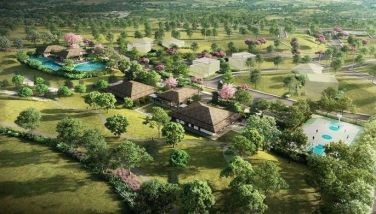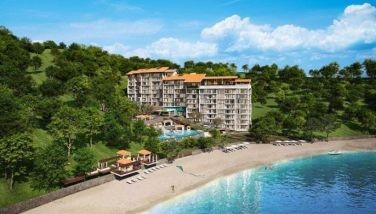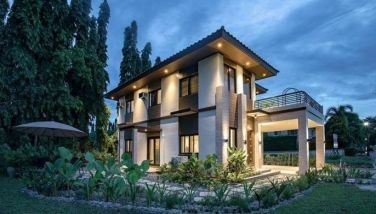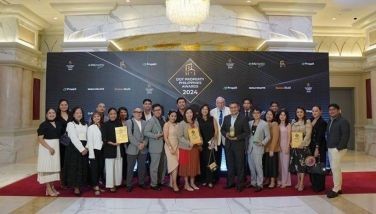DOST institute develops ‘starter house’
February 28, 2004 | 12:00am
LOS BAÑOS, Laguna – Ever heard of "starter house"?
It’s an innovation of the fast-to-build emergency shelter developed by the Lost Baños-based Department of Science and Technology-Forest Products Research and Development Institute (DOST-FPRDI) for the disadvantaged sectors of society.
Initially called F-shelter (F for foldaway) or "folding house," this "instant" prefabricated house can be assembled in less than an hour by four persons.
The original portable "folding house" has a floor space of 11.86 square meters (2.44 x 4.862) and was meant as a shelter for homeless refugees hit by natural disasters and calamities.
It was developed by a team of FPRDI engineers headed by director Florence Soriano.
The team had fleshed out the F-shelter from a contemporary concept whereby a shelter can be folded for storage, and transported to calamity areas to serve as temporary hou-sing.
This way, when the calamities have passed, the shelters can be retrieved and stored until the next calamity. Thus, they do not use up too much space when not in service.
As former FPRDI director Dr. Florentino Tesoro, now DOST undersecretary, had earlier stressed: "Local governments, hard-pressed to provide shelters for refugees, often resort to public schoolrooms. But inadequate as they are, schoolrooms are often the only place for the refugees."
The "folding house" is complete with doors and windows, provision for power and lights, but no toilet or water. It can comfortably accommodate a family of five to six adults.
Its flooring, walls, and roofing are made of wood cement boards, another technology adapted and developed by FPRDI for Philippine conditions.
Cement board is preferred because of its properties: termite-resistant, fire-resistant, heat and sound insulator, and does not unravel even when soaked in water for long periods of time.
On the other hand, the lumber framing used is chemically treated against termites and fungal rot. The design also specifies steel casement windows, door, and door jamb with standard door handle and lock. It is complete with electrical fixtures.
F-shelter can likewise be used as a semi-permanent barangay health center, barangay office, day-care center, farmhouse, beach house, mobile home, and quarter for househelps.
The floor area of the enlarged version of the F-shelter is 28.8 sqm., with a small kitchen and dining area, toilet and bathroom, and bedroom convertible into two smaller bedrooms, and a receiving area.
It is easily transported on a custom-designed chassis (working frame) which can be detached should the owner decide to mount the shelter on site-built permanent footings.
FPRDI reported that the prototype costs P8,130/sqm. If mass-produced using commercially available construction materials, the cost per square meter can be reduced to as low as P4,864.
"If the technology is adapted in an existing plant, mass production will require an investment of P4,533,959," it stated.
FPRDI concluded: "If 70 percent of the investment is financed by a loan at an interest rate of 18.5 percent and the plant will operate on full capacity on third year, an aggressive marketing and information campaign should focus on the product’s advantages.
It’s an innovation of the fast-to-build emergency shelter developed by the Lost Baños-based Department of Science and Technology-Forest Products Research and Development Institute (DOST-FPRDI) for the disadvantaged sectors of society.
Initially called F-shelter (F for foldaway) or "folding house," this "instant" prefabricated house can be assembled in less than an hour by four persons.
The original portable "folding house" has a floor space of 11.86 square meters (2.44 x 4.862) and was meant as a shelter for homeless refugees hit by natural disasters and calamities.
It was developed by a team of FPRDI engineers headed by director Florence Soriano.
The team had fleshed out the F-shelter from a contemporary concept whereby a shelter can be folded for storage, and transported to calamity areas to serve as temporary hou-sing.
This way, when the calamities have passed, the shelters can be retrieved and stored until the next calamity. Thus, they do not use up too much space when not in service.
As former FPRDI director Dr. Florentino Tesoro, now DOST undersecretary, had earlier stressed: "Local governments, hard-pressed to provide shelters for refugees, often resort to public schoolrooms. But inadequate as they are, schoolrooms are often the only place for the refugees."
The "folding house" is complete with doors and windows, provision for power and lights, but no toilet or water. It can comfortably accommodate a family of five to six adults.
Its flooring, walls, and roofing are made of wood cement boards, another technology adapted and developed by FPRDI for Philippine conditions.
Cement board is preferred because of its properties: termite-resistant, fire-resistant, heat and sound insulator, and does not unravel even when soaked in water for long periods of time.
On the other hand, the lumber framing used is chemically treated against termites and fungal rot. The design also specifies steel casement windows, door, and door jamb with standard door handle and lock. It is complete with electrical fixtures.
F-shelter can likewise be used as a semi-permanent barangay health center, barangay office, day-care center, farmhouse, beach house, mobile home, and quarter for househelps.
The floor area of the enlarged version of the F-shelter is 28.8 sqm., with a small kitchen and dining area, toilet and bathroom, and bedroom convertible into two smaller bedrooms, and a receiving area.
It is easily transported on a custom-designed chassis (working frame) which can be detached should the owner decide to mount the shelter on site-built permanent footings.
FPRDI reported that the prototype costs P8,130/sqm. If mass-produced using commercially available construction materials, the cost per square meter can be reduced to as low as P4,864.
"If the technology is adapted in an existing plant, mass production will require an investment of P4,533,959," it stated.
FPRDI concluded: "If 70 percent of the investment is financed by a loan at an interest rate of 18.5 percent and the plant will operate on full capacity on third year, an aggressive marketing and information campaign should focus on the product’s advantages.
BrandSpace Articles
<
>
- Latest
Latest
Latest
October 23, 2024 - 9:30am
By May Dedicatoria | October 23, 2024 - 9:30am
October 11, 2024 - 3:45pm
October 11, 2024 - 3:45pm
October 10, 2024 - 11:30am
October 10, 2024 - 11:30am
October 5, 2024 - 12:08pm
October 5, 2024 - 12:08pm
September 24, 2024 - 1:00pm
September 24, 2024 - 1:00pm
September 13, 2024 - 4:00pm
September 13, 2024 - 4:00pm
Recommended




























